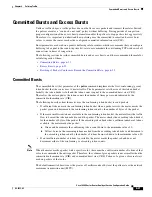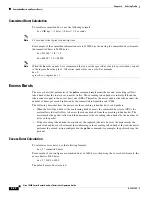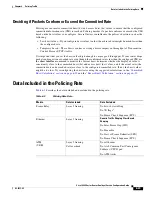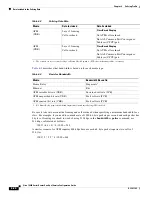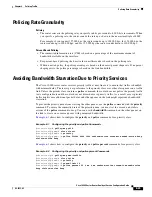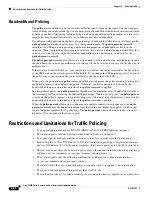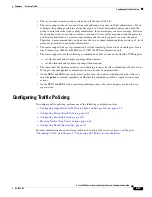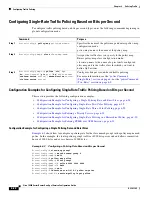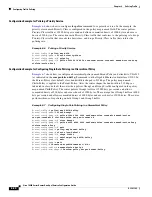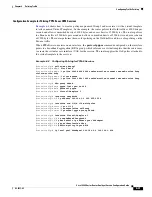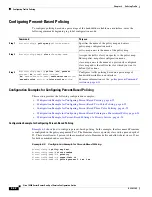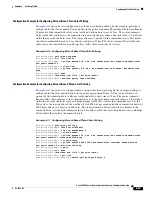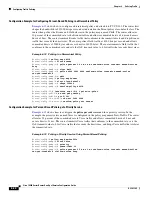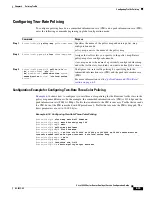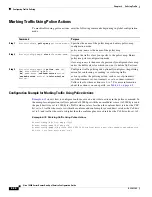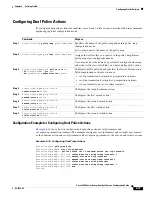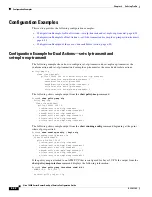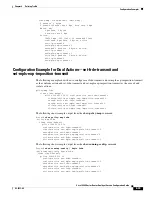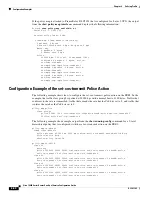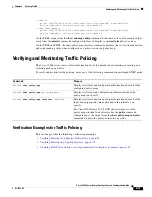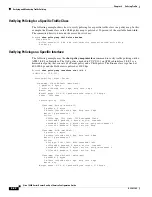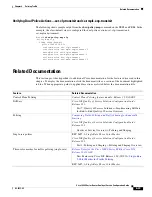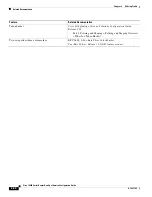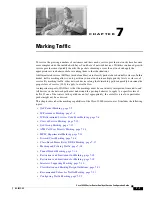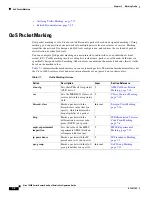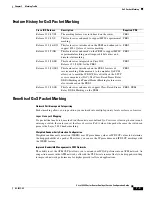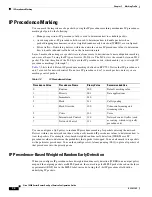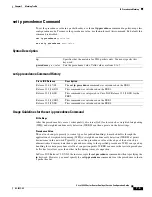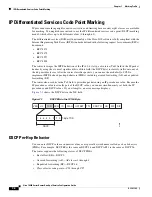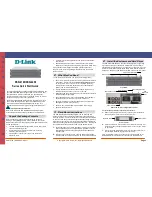
6-35
Cisco 10000 Series Router Quality of Service Configuration Guide
OL-7433-09
Chapter 6 Policing Traffic
Configuring Traffic Policing
Configuring Two-Rate Policing
To configure policing based on a committed information rate (CIR) and a peak information rate (PIR),
enter the following commands beginning in global configuration mode:
Configuration Example for Configuring Two-Rate Three-Color Policing
Example 6-14
shows how to configure two-rate three-color policing for the Premium traffic class in the
policy map named Business. In the example, the committed information rate (CIR) is 512 kbps and the
peak information rate (PIR) is 1 Mbps. Traffic that conforms to the CIR is sent as is. Traffic that exceeds
the CIR, but not the PIR is marked with IP precedence 4. Traffic that exceeds the PIR is dropped. The
burst parameters are set to 10,000 bytes.
Example 6-14 Configuring Two-Rate Three-Color Policing
Router(config)#
class-map match-all Premium
Router(config-cmap)#
match access-group 106
Router(config-cmap)#
exit
Router(config)#
policy-map Business
Router(config-pmap)#
class Premium
Router(config-pmap-c)#
police cir 512000 bc 10000 pir 1000000 be 10000 conform-action
transmit exceed-action set-prec-transmit 4 violate-action drop
Router(config-pmap-c)#
exit
Router(config-pmap)#
exit
Router(config)#
interface atm 3/0/0
Router(config-if)#
service-policy output Business
Command
Purpose
Step 1
Router(config)#
policy-map
policy-map-name
Specifies the name of the policy map and enters policy-map
configuration mode.
policy-map-name
is the name of the policy map.
Step 2
Router(config-pmap)#
class
class-map-name
Assigns the traffic class you specify to the policy map. Enters
policy-map class configuration mode.
class-map-name
is the name of a previously configured class map
and is the traffic class for which you want to define QoS actions.
Step 3
Router(config-pmap-c)#
police
{
cir
cir}
[
bc
]
burst-normal
[
pir
pir
]
[
be
]
peak-burst
[
conform-action
action
]
[
exceed-action
action
]
[
violate-action
action
]
Configures two-rate traffic policing by specifying both the
committed information rate (CIR) and the peak information rate
(PIR).
For more information, see the
“police Command (Two-Rate)”
section on page 6-9
.

